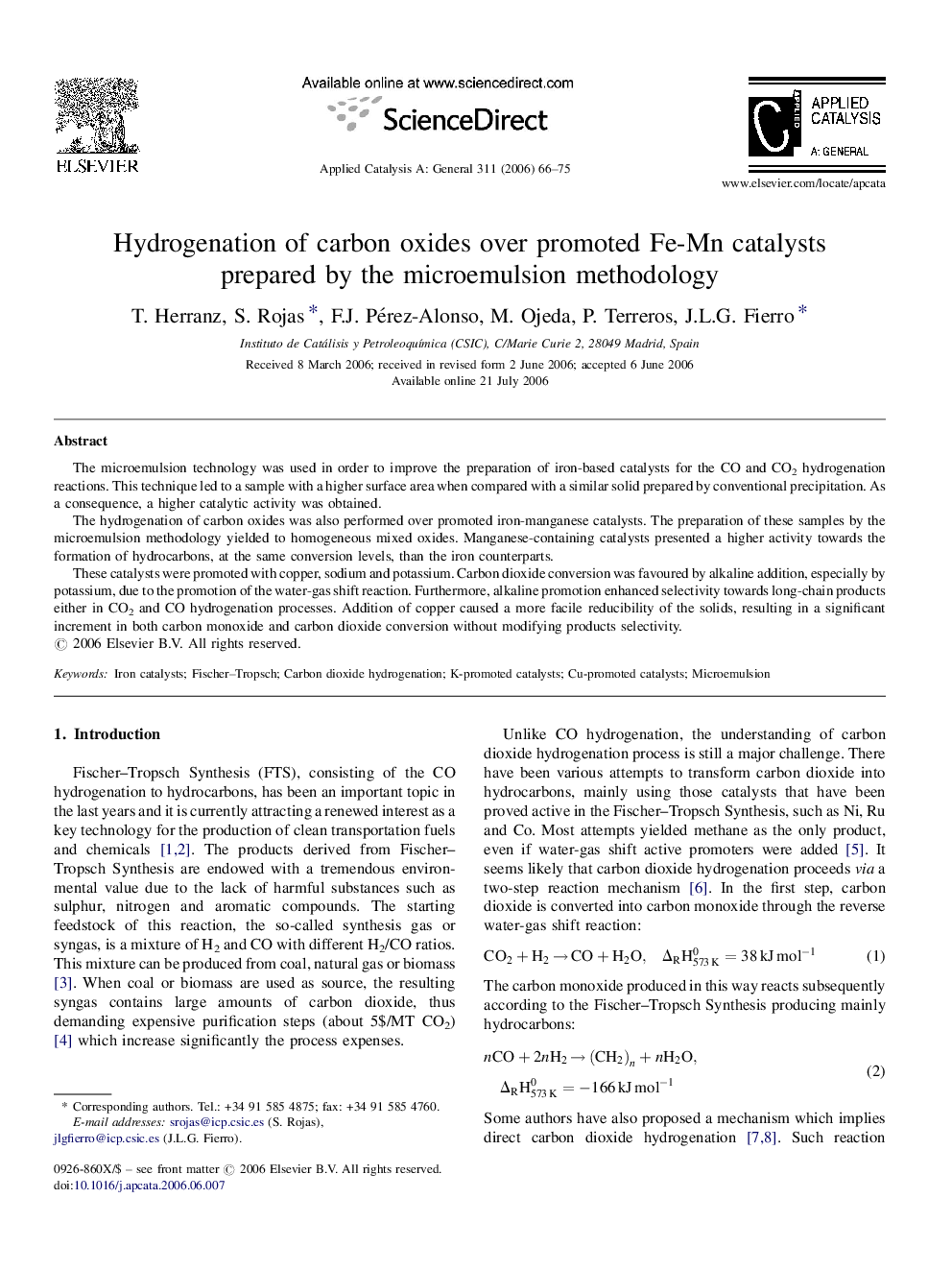| Article ID | Journal | Published Year | Pages | File Type |
|---|---|---|---|---|
| 44649 | Applied Catalysis A: General | 2006 | 10 Pages |
The microemulsion technology was used in order to improve the preparation of iron-based catalysts for the CO and CO2 hydrogenation reactions. This technique led to a sample with a higher surface area when compared with a similar solid prepared by conventional precipitation. As a consequence, a higher catalytic activity was obtained.The hydrogenation of carbon oxides was also performed over promoted iron-manganese catalysts. The preparation of these samples by the microemulsion methodology yielded to homogeneous mixed oxides. Manganese-containing catalysts presented a higher activity towards the formation of hydrocarbons, at the same conversion levels, than the iron counterparts.These catalysts were promoted with copper, sodium and potassium. Carbon dioxide conversion was favoured by alkaline addition, especially by potassium, due to the promotion of the water-gas shift reaction. Furthermore, alkaline promotion enhanced selectivity towards long-chain products either in CO2 and CO hydrogenation processes. Addition of copper caused a more facile reducibility of the solids, resulting in a significant increment in both carbon monoxide and carbon dioxide conversion without modifying products selectivity.
